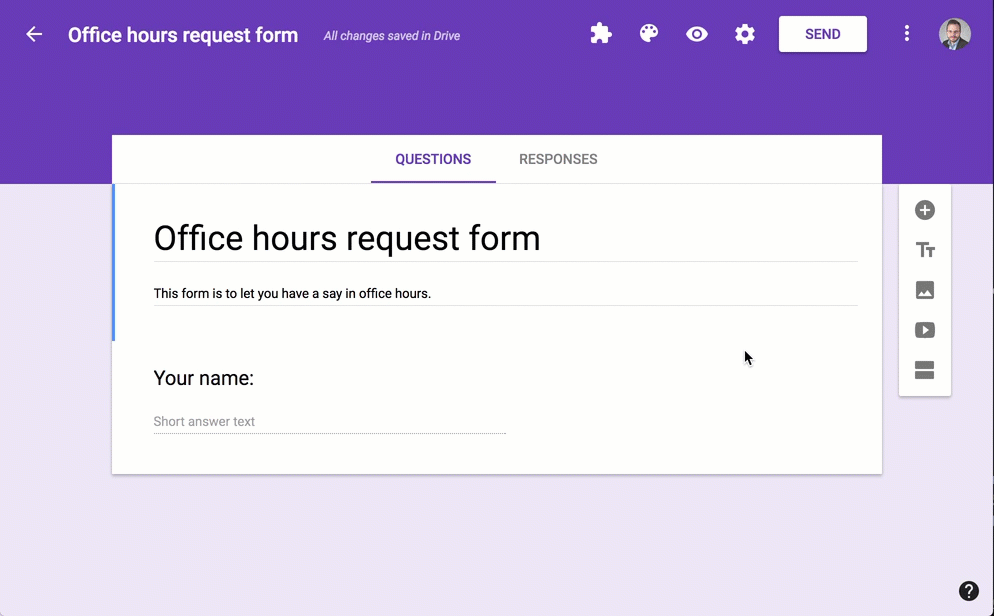Sanity check: Wait until day 3 to set office hours

For me, and for a lot of you, the new semester started yesterday. Getting a course ready to launch requires a lot of planning, and traditionally one of those items to plan are your office hours. This is a much more important decision than a lot of us realize. Office hours are there to offer regular, dedicated time and space for students to have individual interactions with us, and that personal interaction plays a huge role in student success in college. Through our personal interactions with students, we not only get a chance to focus our teaching on an individual's preferences and interests; individual interaction also has a positive impact on students' critical thinking skills and allows us to tune our teaching more to students' individual learning tendencies. One study also links faculty-student interaction strongly with academic achievement particularly among students of color.
We usually put office hours in our syllabi, which are handed out on day 1. My department asks that we report these before classes start so they can go in a directory. However, over the last couple of semesters I've become convinced that we shouldn't set office hours before the first day of classes, and I'd like to recommend that practice to everyone. Instead, we should wait a couple of days and get students' input on office hours, before setting them. So, aim to set and distribute office hours around day 3 of the semester.
I've found that by waiting to set office hours until I get student input, there are three good side effects:
- The whole point of having office hours is to have students come to office hours. By factoring in student preferences, office hours are more likely to be a better match to students' actual schedules, and thus students have fewer barriers to actually attending.
- If we let students have a say in office hours, not only will their schedules match better, students will also have some ownership over office hours because they helped make them.
- By giving students a say in office hours, it sends a more general message that you are open to student input and are listening to student voices in how you run the course. That's another way to promote that client-consultant model of teaching and learning that we all want.
There are a lot of ways to get student input on office hours, but here's what I do:
- First look at your own schedule and decide on a list of time slots you'd be willing to devote to office hours. To do this, you need to have a sense of regular times during the week that you'll devote to other things --- teaching classes obviously, but also recurring times you want to set aside for research, committee work, etc. Decide on a minimal but significant set of times you want to keep for yourself, then open the rest of them to students. I take those times and split them up into 30-minute blocks.
- Put those time slots on a Google Form as parts of a "Checkbox" question, so students can select any time slot that works for them.
- Send out the URL for the form, with a tight deadline --- say, 24 or 36 hours to respond (because although we're waiting after the first day of classes to do this, we need to get it done).
- Once student responses are in, look over the student responses (Google Forms will generate reports for the responses that includes bar charts, so you can do this visually). Then, using your best judgment, put together a slate of office hours that works for you, that also meets the most frequently-requested student times, and announce those at the next class.

If you're like me and your department needs those times before the semester starts, just inform the department (as I do) that I am waiting until the first week to set office hours because I want student input on them. If they still need to know, just make something up and change it later.
A nice alternative to Google Forms is the web service WhenIsGood. This service lets you create schedules by marking off blocks of time that work for you, then you send a URL to other people, who can then mark time slots as "best", "OK", "possible but not ideal", just simply not doable. It's intended to be used with smaller groups of people, so it may not work for classes of 15 or more; but it's worth a try if you don't want to use Google Forms.
And then, of course, make sure to actually show up for office hours and get ready to work hard with your students, and make it worth their while.
Any questions?


